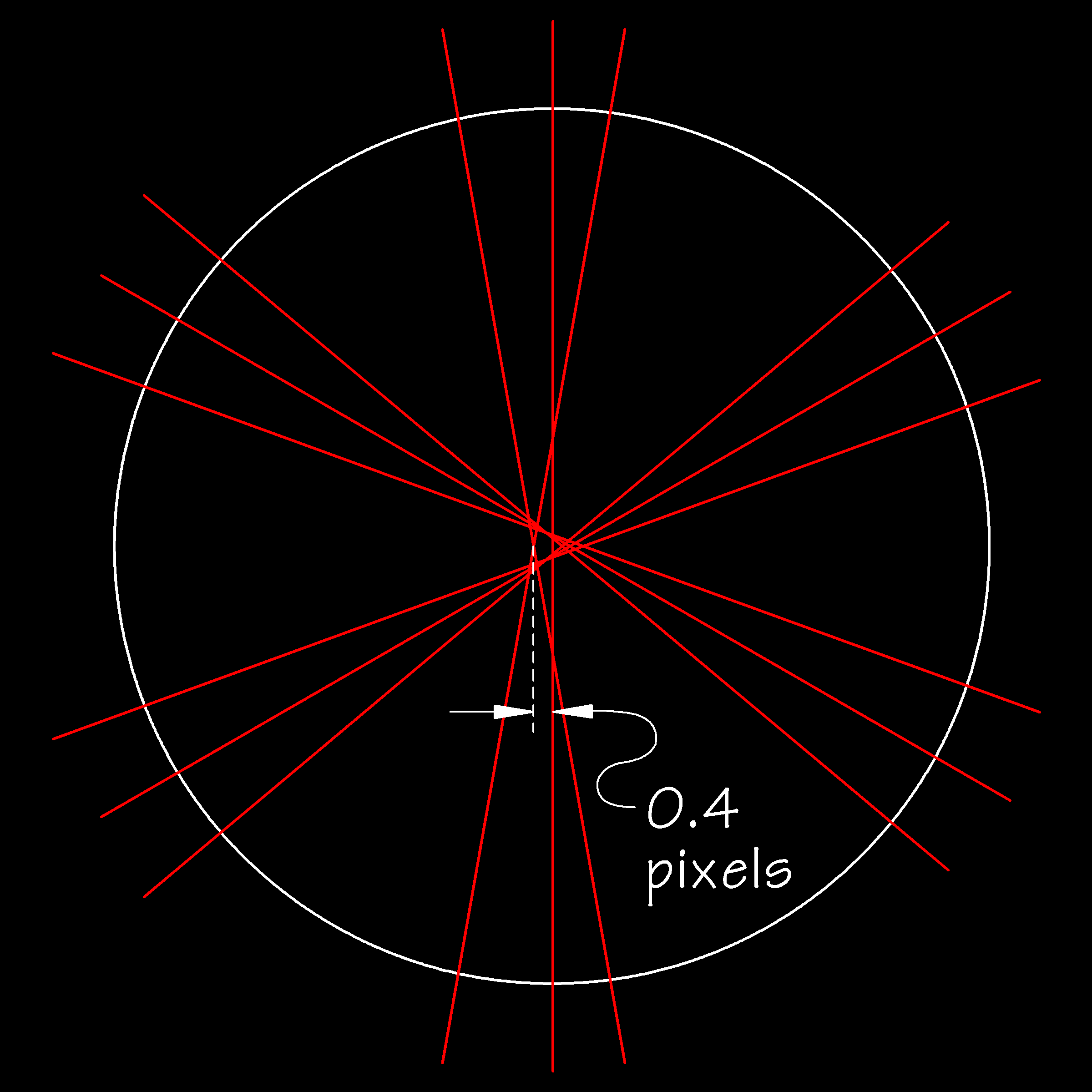Schmidt Cassegrain Collimation
This example of Schmidt Cassegrain collimation uses a 200 mm f/10 Schmidt Cassegrain telescope.
Spot Diagram
In this example one collimation screw on the secondary mirror is turned 5 degrees or one-72nd of a revolution. The collimation screw is assumed to be a representative M4-0.7 screw, meaning a 4 mm diameter and a 0.7 mm thread pitch. Thus, a 5 degree turn is 10 micrometers (microns) at one edge of the mirror. Below is the on-axis spot diagram on a CCD with 6 micrometers (microns) pixels.

|
| Spot Diagram: 200 mm f/10 Schmidt Cassegrain, secondary mirror tilted by one-72nd turn of collimation screw or 10 µm, CCD pixel size 6 µm |
The above image shows what should have been a pin-point sharp spot spot diagram has expanded to nearly a full pixel across due to a 10 micrometer (micron) misalignment of the secondary mirror. Given that the FWHM of the Airy disk of this imaging setup is about 0.9 pixels, the aberration introduced by the misalignment will certainly affect the final image even after astronomical seeing blurs the spot.
GoldFocus Plus Collimation Measurement
GoldFocus Plus uses a diffraction mask and analysis software to measure very specific locations in a star's diffracted spot diagram. Below is the idealized diffraction pattern of the above spot diagram for the 200 mm f/10 Schmidt Cassegrain with the secondary mirror misaligned by 10 micrometers (microns). GoldFocus Plus measures the 200 mm f/10 Schmidt Cassegrain collimation as being out by 0.4 pixels.

|
| GoldFocus Plus Collimation Measurement: 200 mm f/10 Schmidt Cassegrain, secondary mirror tilted by one-72nd turn of collimation screw or 10 µm, CCD pixel size 6 µm |

